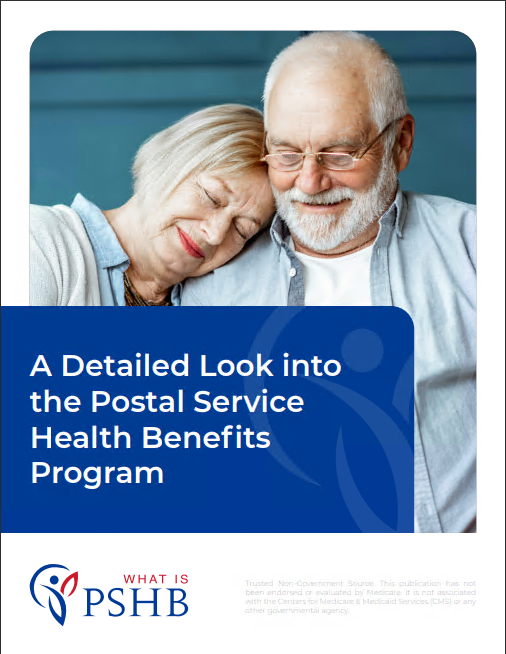Key Takeaways
-
This year’s Open Season marks a significant shift as postal workers transition to the new Postal Service Health Benefits (PSHB) Program. Understanding your options is essential.
-
Changes in health benefits and the integration of Medicare require careful review to ensure you’re covered adequately for 2025 and beyond.
A New Chapter in Postal Worker Health Benefits
If you’re a postal worker or retiree, 2025 brings big changes with the introduction of the Postal Service Health Benefits (PSHB) Program. This new system replaces the Federal Employees Health Benefits (FEHB) Program for postal employees, creating a plan exclusively for those in the U.S. Postal Service.
During this year’s Open Season, from November 11 to December 9, 2024, you’ll need to review your options and decide what’s best for you and your family. With changes in premiums, Medicare integration requirements, and plan structures, there’s plenty to consider. These changes reflect efforts to streamline healthcare benefits, ensuring postal workers have access to tailored solutions that meet their unique needs.
Why the Transition to PSHB?
The shift to PSHB is part of broader reforms aimed at addressing financial challenges faced by the Postal Service. With rising healthcare costs and unique needs among postal workers, the PSHB program is designed to:
-
Offer tailored healthcare options specific to postal employees.
-
Align better with Medicare for eligible retirees.
-
Improve cost management for both employees and the USPS.
-
Provide predictable, streamlined coverage options to reduce administrative complexity.
The good news is that if you’re already enrolled in an FEHB plan, your transition to a corresponding PSHB plan will happen automatically unless you choose to make changes during Open Season. But automatic enrollment doesn’t mean you should skip reviewing your options. Exploring the available plans is crucial to ensure the selected coverage aligns with your personal and family needs.
Medicare Integration: What You Need to Know
A major difference with PSHB is how it integrates with Medicare. Here’s what you should keep in mind:
-
Medicare Part B Enrollment: Starting in 2025, certain Medicare-eligible retirees and their Medicare-eligible family members must enroll in Medicare Part B to maintain PSHB coverage.
-
Exemptions: If you retired on or before January 1, 2025, and aren’t already enrolled in Part B, you’re exempt from this requirement.
-
Coordination of Benefits: For those enrolled in both PSHB and Medicare, the two programs work together to reduce out-of-pocket costs. Medicare typically becomes the primary payer, while PSHB acts as secondary coverage.
-
Enhanced Drug Coverage: Those on Medicare Part D will benefit from the new $2,000 out-of-pocket cap for prescription drugs, reducing financial strain for high-cost medications.
Navigating Open Season: Your Checklist
To make the most of Open Season, it’s crucial to take proactive steps. Here’s a simple checklist to guide you:
1. Review Plan Options
Each PSHB plan offers different levels of coverage, premiums, and benefits. Take the time to:
-
Compare monthly premiums and out-of-pocket costs.
-
Understand what’s covered, including doctor visits, hospital stays, and prescription drugs.
-
Check if your preferred healthcare providers are in-network.
-
Examine coverage details for specialized care, including therapies and chronic condition management.
2. Assess Your Medicare Needs
If you’re Medicare-eligible, evaluate whether enrolling in Part B makes sense for you. Keep in mind the 2025 Medicare Part B premium increase to $185 and a deductible of $257. Explore how these costs balance with your overall healthcare needs and budget.
3. Account for Family Members
If your dependents are on your plan, confirm their eligibility under PSHB. This is particularly important if they’re Medicare-eligible or approaching retirement age. Don’t overlook reviewing options for younger family members who might require different levels of care.
4. Plan for the Future
Think beyond 2025. Healthcare needs change, so it’s wise to choose a plan that offers flexibility as your circumstances evolve. Consider whether your chosen plan has adaptability for potential medical advancements or policy changes.
Costs to Expect in 2025
With PSHB, you’ll encounter some familiar costs and a few changes. Here’s what’s projected:
-
Premiums: Vary depending on the plan you choose. Government contributions toward premiums remain similar to those under FEHB.
-
Medicare Costs: The new Part B premium for 2025 is $185, with a $257 annual deductible.
-
Prescription Drug Coverage: If you’re enrolled in Medicare Part D, a new $2,000 cap on out-of-pocket drug costs offers significant savings potential. This change is a vital step toward making essential medications more affordable.
-
Coinsurance for Hospital Stays: Daily coinsurance for hospital stays will be $419 for days 61-90 under Medicare Part A and $838 for lifetime reserve days. These costs highlight the importance of supplemental PSHB coverage.
Remember, PSHB plans are designed to integrate seamlessly with Medicare, so understanding these costs upfront can help you avoid surprises. Proactive planning during Open Season ensures that you’re not caught off guard by expenses.
How PSHB Benefits Retirees
For retirees, the PSHB program aims to provide comprehensive and coordinated healthcare. Here’s how it’s structured to benefit you:
-
Enhanced Coverage with Medicare: If you’re enrolled in Medicare Parts A and B, your PSHB plan acts as supplemental insurance, reducing out-of-pocket expenses for services like specialist visits and inpatient care.
-
Predictable Costs: The introduction of the out-of-pocket cap for prescription drugs under Part D is a game-changer. It simplifies budgeting for retirees who rely on high-cost medications.
-
Simplified Transition: For those already retired, the automatic enrollment process ensures you won’t lose coverage as you shift to PSHB. This ease of transition offers peace of mind for retirees navigating these changes.
Common Questions About PSHB
What happens if I don’t enroll in Medicare Part B?
If you’re required to enroll in Medicare Part B and choose not to, you may lose your PSHB coverage. It’s essential to review your eligibility and requirements during Open Season.
Will my premiums increase?
While premiums under PSHB may differ from those under FEHB, government contributions remain consistent, helping to offset costs. Comparing plans during Open Season is the best way to gauge potential changes.
Can I switch plans later?
Outside of Open Season, switching plans is generally not allowed unless you experience a qualifying life event, such as marriage, divorce, or the birth of a child. Be proactive during Open Season to avoid being locked into an unsuitable plan.
Important Deadlines and Timelines
Here are the key dates to keep in mind:
-
Open Season: November 11 to December 9, 2024.
-
Effective Date for Changes: January 1, 2025.
-
Medicare Part B Enrollment Deadline: If required, you must enroll before coverage begins in 2025.
Missing these deadlines could result in higher costs or a lapse in coverage, so mark your calendar! Staying ahead of these key dates allows you to secure your preferred healthcare options.
Maximizing Your PSHB Benefits
To get the most out of the PSHB program, consider these strategies:
-
Leverage Preventive Services: Many plans offer free or low-cost preventive care, such as screenings and vaccinations. Utilize these services to maintain your health and catch potential issues early.
-
Use In-Network Providers: Staying within your plan’s network can significantly reduce your out-of-pocket expenses. Verify which providers are included in your chosen plan before committing.
-
Keep Track of Expenses: Understanding your annual healthcare costs helps you evaluate whether your current plan remains the best fit. Regularly assessing your spending patterns ensures you’re making the most of your benefits.
-
Monitor Policy Updates: Healthcare policies evolve, so staying informed about any PSHB adjustments will help you adapt seamlessly.
Ready for 2025? What’s Next
The transition to the PSHB program marks a significant change for postal workers and retirees. By taking advantage of Open Season and reviewing your healthcare needs, you can ensure a smooth shift to this new system while maximizing your benefits. Stay informed, compare your options, and don’t hesitate to reach out for assistance if you’re unsure about any details. Being proactive now can save you from unexpected challenges down the line.






